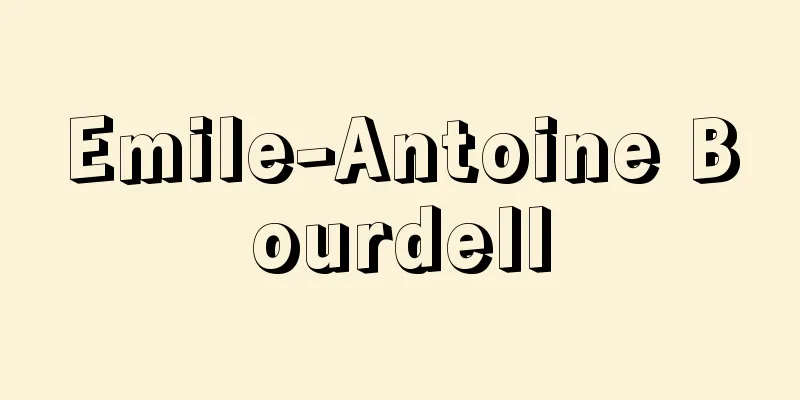Emile-Antoine Bourdell

|
French sculptor. Born in Montauban. From the age of 13, he worked on sculpting furniture in his father's workshop, a furniture maker, to help support his family. His talent was soon recognized, and he received a scholarship from the city of Montauban to enter the School of Fine Arts in Toulouse. Seven years later, at the age of 23, he went to Paris to study under Falguière at the École des Beaux-Arts. However, dissatisfied with academia, he dropped out after two years, worked in Darou's studio, and then became Rodin's assistant in 1893. His 15 years there had a great influence on Bourdelle's development as a sculptor, but although he was impressed by Rodin, he did not follow his example. While both artists expressed life filled with intense passion, Bourdelle's sculptures were constructed in a way that differed from Rodin's rules. With a firm framework, well-balanced mass, and simplified surfaces, Bourdelle condensed an abundance of passion and dynamism into a monumental, structural, and solid form. The starting point of this style was "The Head of Apollo" (1900), whose sculptural beauty is said to have moved Rodin, who envied him by saying, "You are leaving me," and the apex of this style is considered to be "Hercules Drawing the Archer" (1910). This work caused a great sensation in the sculpture world, and firmly established Bourdelle's place in the history of modern sculpture alongside Rodin and Maillol. Until his death on October 1, 1929, at Le Vésinet near Paris, he produced many excellent monuments in his style, such as the Monument to General Alvear (1925) and the Monument to Miskiewicz (1929), and has made his name immortal as a monumental artist. Other notable works include Fruit (1906), Penelope (1909), The Dying Centaur (1914), Sappho (1925), and the series of portraits of Beethoven that he produced from 1888 until his death. His Paris studio is now the Musée Bourdelle. [Ryoko Kuroda] "Tominaga Soichi Commentary: Complete Collection of Contemporary World Art 5: Rodin/Bourdelle" (1971, Shueisha) Source: Shogakukan Encyclopedia Nipponica About Encyclopedia Nipponica Information | Legend |
|
フランスの彫刻家。モントーバンに生まれる。13歳のときから、家計を助けるため、家具職人の父の仕事場で家具の彫刻を手がけたが、まもなくその素質が高く評価され、モントーバン市から奨学金を受けてトゥールーズの美術学校に入学。さらに7年後、23歳でパリに出て、エコール・デ・ボザールでファルギエールに師事した。しかし、アカデミズムに飽き足らず2年後に中途退学し、ダルーのアトリエで働いたのち、1893年よりロダンの助手となった。ここでの15年間は彫刻家としてのブールデルの成長に大きな影響を与えたが、彼はロダンに感動しながらも追随することはなかった。ともに激しい情熱にあふれた生命を表現しながら、ブールデルの彫刻の組立ては、ロダンの法則と異なっていたからである。 ブールデルは確固たる骨組み、均衡のとれたマッス、単純化された面によって、モニュメンタルで構築性に富んだ堅固なフォルムのなかに、あふれるばかりの熱情と力動感を凝縮させた。この様式の出発点となるのが、ロダンがその彫刻的美しさに感動し、「君は私から離れて行く」と羨望(せんぼう)を込めて語ったと伝えられる『アポロンの首』(1900)であり、その頂点にたつと考えられるのが『弓をひくヘラクレス』(1910)である。この作品は彫刻界に大きなセンセーションを巻き起こし、ロダン、マイヨールと並んで、近代彫刻史におけるブールデルの位置を確固たるものとした。1929年10月1日、パリ近郊のル・ベジネで亡くなるまで、『アルベアル将軍記念碑』(1925)、『ミスキエビッチ記念碑』(1929)など、その様式にふさわしい多数の優れた記念碑を制作し、モニュメントの作家としての名を不朽のものとしている。そのほかの代表作に『果実』(1906)、『ペネロープ』(1909)、『瀕死(ひんし)のケンタウロス』(1914)、『サッフォー』(1925)、そして1888年から没年まで続いたベートーベンの肖像連作がある。パリのアトリエは現在ブールデル美術館となっている。 [黒田亮子] 『富永惣一解説『現代世界美術全集5 ロダン/ブールデル』(1971・集英社)』 出典 小学館 日本大百科全書(ニッポニカ)日本大百科全書(ニッポニカ)について 情報 | 凡例 |
<<: Prudential Insurance Co. of America
>>: Bull Terrier [species] (English spelling) Bullterrier
Recommend
Heat of reaction
This refers to the amount of heat that enters and...
Virya (English spelling)
...a translation of the Sanskrit word vīrya. To s...
Kakizaki Hakyo
Year of death: 22 June 1826 (26 July 1826) Year of...
Expectation rights - expectation rights
A right that contains the hope or expectation tha...
Coccinellidae
...Adults of the ladybird beetle H. yedoensis , w...
Austl - Austl
...Currently, it refers to the cold, humid northe...
Castle - Shiro
A type of architecture built as a military defense...
Art school
…In place of the early modern period's studio...
Carinthia
...A beautiful place blessed with mountains and l...
Approximation method - Kinjikaiho
... When the transportation network between citie...
Shaved head - Bouzu
〘Noun〙① Buddhist term. Refers to the head monk of ...
Coenzyme - coenzyme
A prosthetic group that reversibly binds to the p...
channel separation
...The ratio of the signal level to the level of ...
Kiso eleven post towns
...The Kiso post towns were characterized by the ...
Iconostasion - Ikonostasion
…In Eastern Orthodox churches, a partition separa...




![Tsukiyono [town] - Tsukiyono](/upload/images/67cc3b4b0f0b2.webp)




